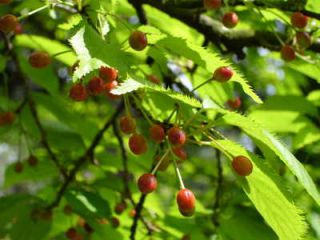

Wild cherry is a very beautiful wild tree that is known for its wood and fruits.
Wild cherry tree short facts list
Name – Prunus avium
Family – Rosaceae
Type – tree
Height – 16 to 40 feet (5 to 12 meters)
Exposure – full sun
Soil – humus-rich, well drained
Foliage – deciduous – Flowering – Spring
Pruning and care take a large part in supporting wild cherry tree growth and blooming.
It is recommended to plant the wild cherry tree in fall, before the first frost spells, to give it time to develop roots.
If you plant your wild cherry in winter, proceed only if it doesn’t freeze.
Just like most trees that have been purchased in pots or containers, it’s possible to wait for spring and summer to transplant it, if you avoid hot spells.
If this is the case, it will be necessary to water regularly over the first few months after planting.

Thus, the only pruning that is really important is the removing of dead and weak wood.

The wild cherry tree is absolutely magnificent. It prettifies the beginning of spring with abundant flowers in hues of white and pink. This period, although quite short, will turn your garden into a colorful space and announces the return of spring.
Wild cherry is more often than not cultivated for its fruits or its wood, which furniture makers appreciate.
Wild cherry is savored either as jam or in spirits.
Avoid places that are too exposed to wind so that the fragile blooms aren’t swept away too soon!